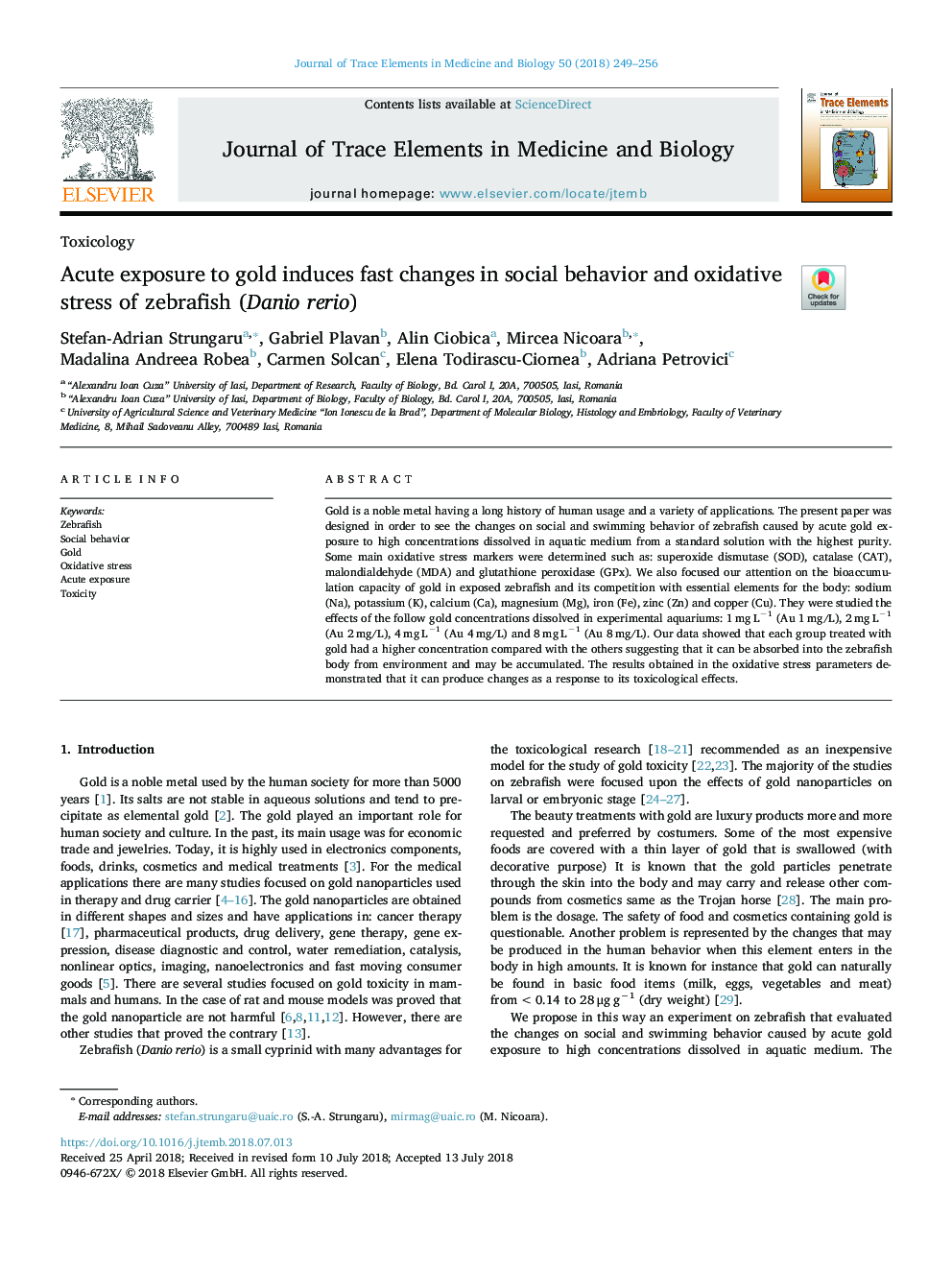| Article ID | Journal | Published Year | Pages | File Type |
|---|---|---|---|---|
| 7638760 | Journal of Trace Elements in Medicine and Biology | 2018 | 8 Pages |
Abstract
Gold is a noble metal having a long history of human usage and a variety of applications. The present paper was designed in order to see the changes on social and swimming behavior of zebrafish caused by acute gold exposure to high concentrations dissolved in aquatic medium from a standard solution with the highest purity. Some main oxidative stress markers were determined such as: superoxide dismutase (SOD), catalase (CAT), malondialdehyde (MDA) and glutathione peroxidase (GPx). We also focused our attention on the bioaccumulation capacity of gold in exposed zebrafish and its competition with essential elements for the body: sodium (Na), potassium (K), calcium (Ca), magnesium (Mg), iron (Fe), zinc (Zn) and copper (Cu). They were studied the effects of the follow gold concentrations dissolved in experimental aquariums: 1â¯mgâ¯Lâ1 (Au 1â¯mg/L), 2â¯mgâ¯Lâ1 (Au 2â¯mg/L), 4â¯mgâ¯Lâ1 (Au 4â¯mg/L) and 8â¯mgâ¯Lâ1 (Au 8â¯mg/L). Our data showed that each group treated with gold had a higher concentration compared with the others suggesting that it can be absorbed into the zebrafish body from environment and may be accumulated. The results obtained in the oxidative stress parameters demonstrated that it can produce changes as a response to its toxicological effects.
Related Topics
Physical Sciences and Engineering
Chemistry
Analytical Chemistry
Authors
Stefan-Adrian Strungaru, Gabriel Plavan, Alin Ciobica, Mircea Nicoara, Madalina Andreea Robea, Carmen Solcan, Elena Todirascu-Ciornea, Adriana Petrovici,
